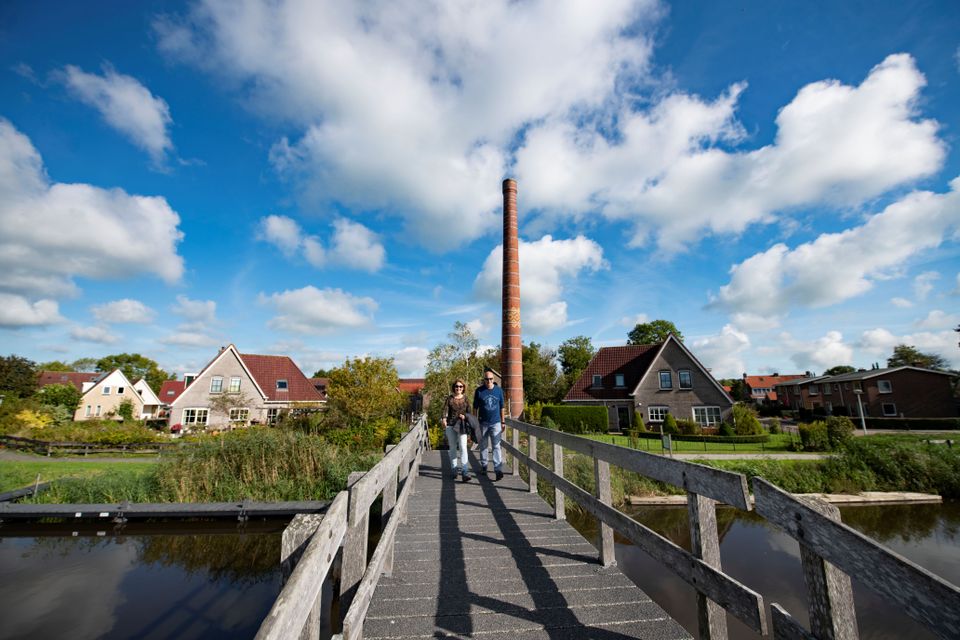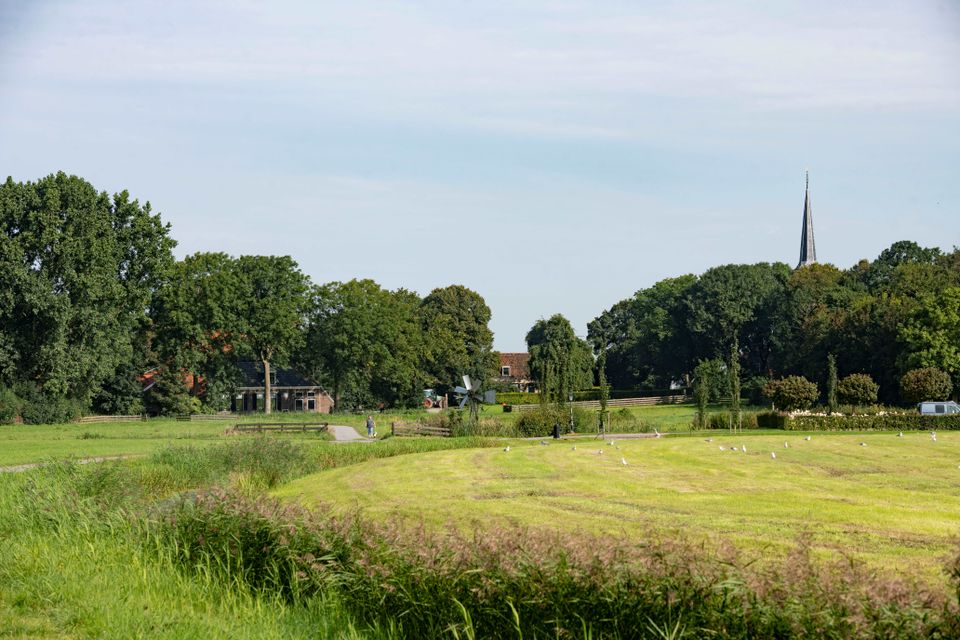Oosterlittens (Easterlittens)
Oosterlittens
The chimney of the former factory serves as a unique landmark for the terp village. Oosterlittens is a diligent and active village. For several years now, it has also been hosting the Open Frisian Championship in 'Jeu de Pelote.
Take a look
The village originated around 1275 with the name Lechenghe and is now officially called Easterlittens or Oosterlittens in Dutch.
Oosterlittens once consisted of five terps in the heart of the so-called Greidhoeke region. All habitation was concentrated on these terps, which protected the residents from water. The largest terp was raised around 800 AD due to the danger of flooding. This became the core of what is now Easterlittens. The remaining hamlets, Wieuwens, Langwert, Wammert, and Skrins, were the other inhabited smaller terps. After the dikes were built, farms were also constructed around the terps, allowing the church to be built on top of the largest terp in the 12th century. The current Dutch Reformed Church was founded in those early Catholic times, dedicated to Saint Margaret.
From a distance, the village is distinguishable from others by the chimney of the (former) dairy factory and the church tower on the terp in the middle of the village. After the demolition of the dairy factory in 1996/1997, the chimney with the associated boiler house was fortunately preserved for the village's appearance.
Traditionally, a resident of Easterlittens has the nickname "Littenser Ropein." This nickname is derived from the loud voices of trade merchants and cargo skippers who used to visit Easterlittens.
Oosterlittens is a diligent and active village. For several years now, it has also been hosting the Open Frisian Championship in 'Jeu de Pelote.'
Here you will find Oosterlittens (Easterlittens)
dorpOosterlittens Plan your route naar Oosterlittens (Easterlittens)
from your location




